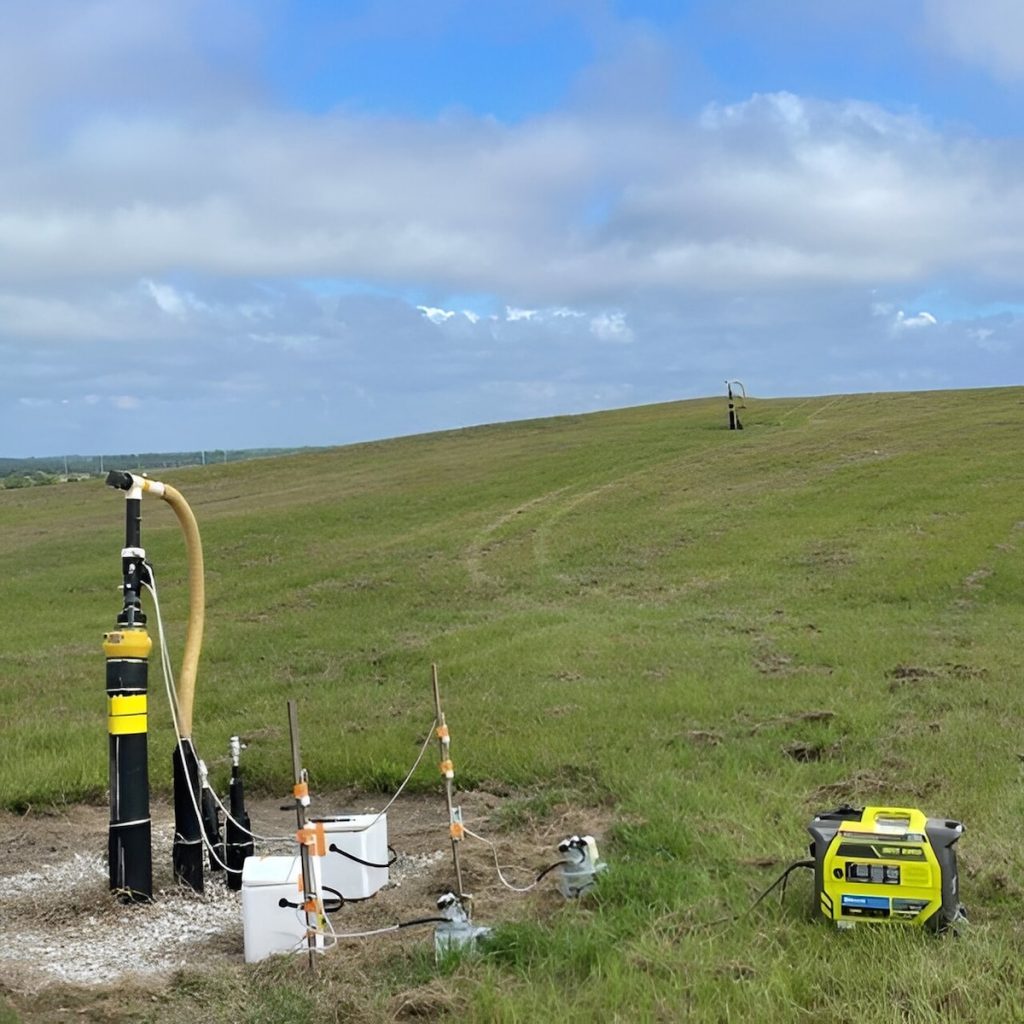U.S. Landfills Are Major Sources of Airborne PFAS Pollution, Study Finds
3 min read
Landfill emissions from three sites in Florida, such as this one from the study, contain high levels of airborne PFAS. Ashley Lin
Founded in 2005 as an Ohio-based environmental newspaper, EcoWatch is a digital platform dedicated to publishing quality, science-based content on environmental issues, causes, and solutions.
Landfills in the United States — one of the country’s biggest sources of pollution — have been found to contain large amounts of toxic per- and polyfluoroalkyl substances (PFAS) “forever chemicals.”
A recent study has found that PFAS likely make their way into the surrounding environment through gas emitted from landfills, since treatment systems at the facilities are not equipped to destroy or manage the hazardous chemicals, reported The Guardian.
“The undisclosed and ubiquitous use of perfluoroalkyl and polyfluoroalkyl substances (PFAS) in consumer products has led to a growing issue of environmental pollution, particularly within the solid waste community, where the fate of volatile (neutral) PFAS in landfilled refuse is not well understood,” the authors of the study wrote. “Even under conservative assumptions, the mass of fluorine leaving in landfill gas (32–76%) was comparable to or greater than the mass leaving in landfill leachate (24–68%). These findings suggest that landfill gas, a less scrutinized byproduct, serves as a major pathway for the mobility of PFAS from landfills.”
PFAS are a group of synthetic chemical compounds used to make products that are water, heat and stain resistant, such as clothing, cookware and firefighting foam. Termed “forever chemicals” because they persist in the environment without breaking down, they have been found to build up in the bodies and bloodstreams of humans and other animals.
PFAS have been associated with birth defects, cancer, liver and thyroid diseases and other serious health problems.
The researchers assessed three Florida municipal solid waste landfills for gas and liquid containing PFAS.
“The researchers pumped landfill gas from pipes through cartridges filled with resin that captured the airborne PFAS. They freed the compounds from the cartridges with organic solvents and analyzed the extracts for 27 neutrally charged PFAS, including fluorotelomer alcohols,” a press release from the American Chemical Society (ACS) said. “The researchers also collected leachate samples at the Florida sites and analyzed them for ionic PFAS commonly found in water samples. From this data, they estimated that the annual amount of fluorine (as a proxy for PFAS content) leaving the landfills through gas emissions could be similar to, or even greater than, the amount leaving through leachates.”
Ashley Lin, lead author of the study and a researcher at the University of Florida, said the findings were “definitely an alarming thing for us to see,” as The Guardian reported.

While gas collection systems can capture much of the landfill emissions — in some instances running it through filters or burning it off in flares — PFAS are hard to destroy and are not effectively eliminated by flares. Instead, incinerators and flares break down forever chemicals into smaller forms, sending the waste into the air.
“Because landfills are repositories for PFAS, this work indicates that vented gas from these sites should be considered in future mitigation and management strategies to reduce potential inhalation exposure and release to the environment. Some landfills burn the vapors or trap them for energy production, and the team suggests that further research is needed to determine the degree of removal these treatments provide for airborne contaminants,” the ACS press release said.
Currently, there is no accurate estimate of the levels of airborne PFAS pollution landfills create, or a proven solution.
“We need to understand that management aspect and what can happen with the different types of treatment technologies in place,” Lin said, as reported by The Guardian.
The study, “Landfill Gas: A Major Pathway for Neutral Per- and Polyfluoroalkyl Substance (PFAS) Release,” was published in the journal Environmental Science & Technology Letters.
Subscribe to get exclusive updates in our daily newsletter!
By signing up, you agree to the Terms of Use and Privacy Policy & to receive electronic communications from EcoWatch Media Group, which may include marketing promotions, advertisements and sponsored content.





